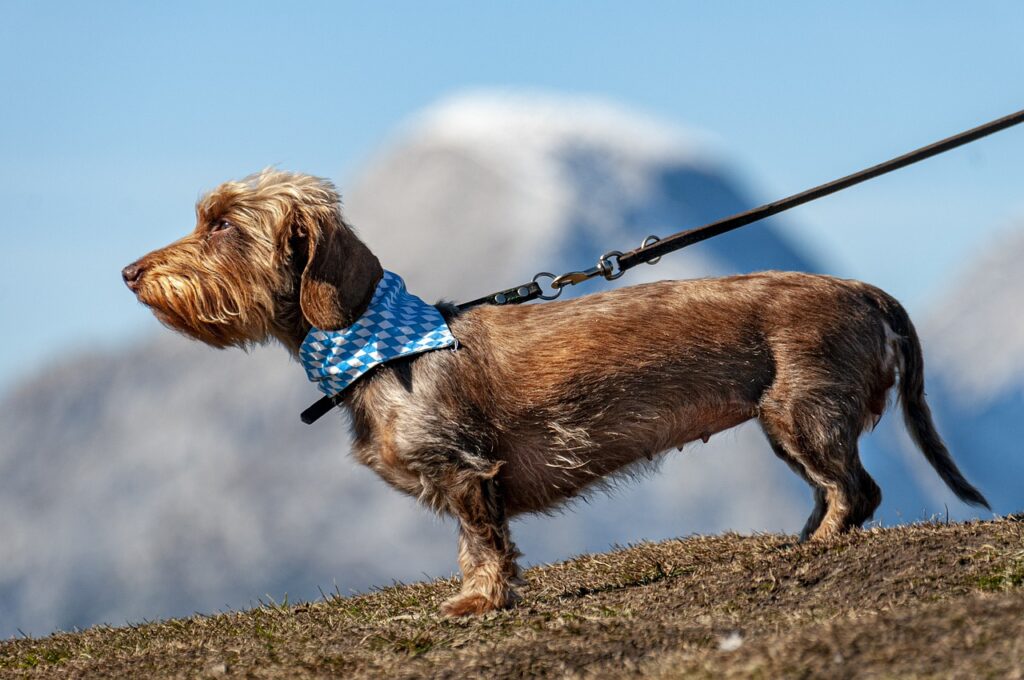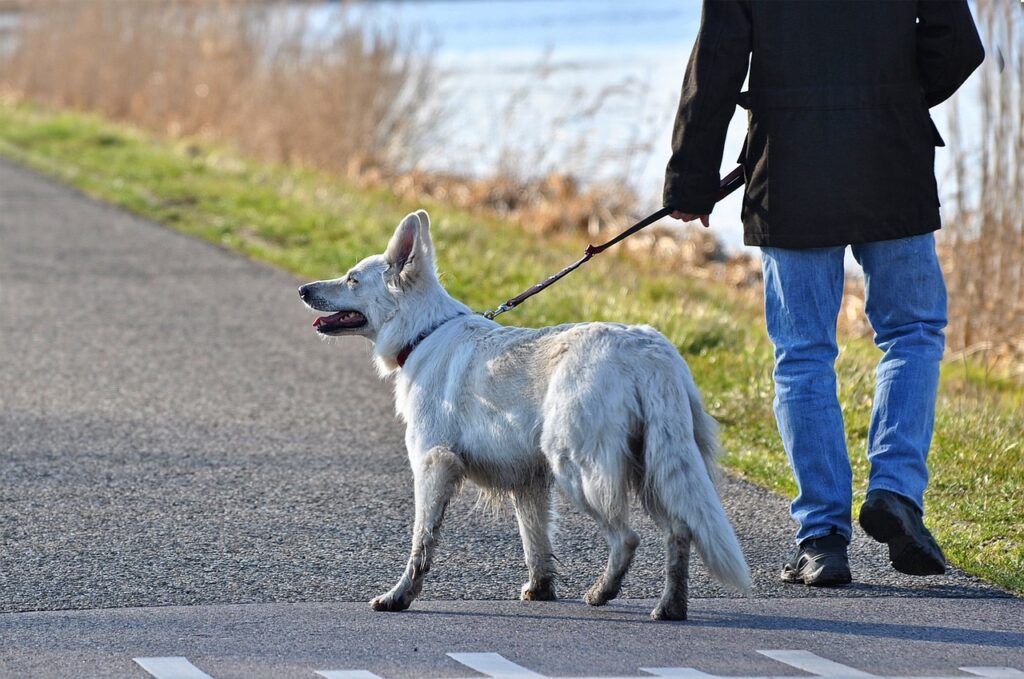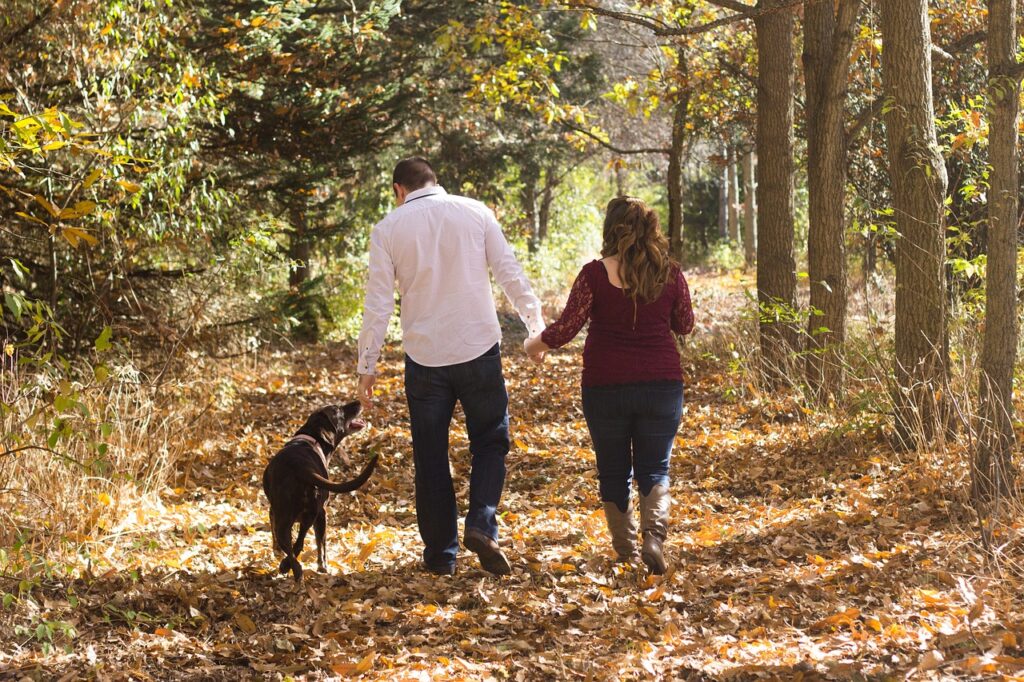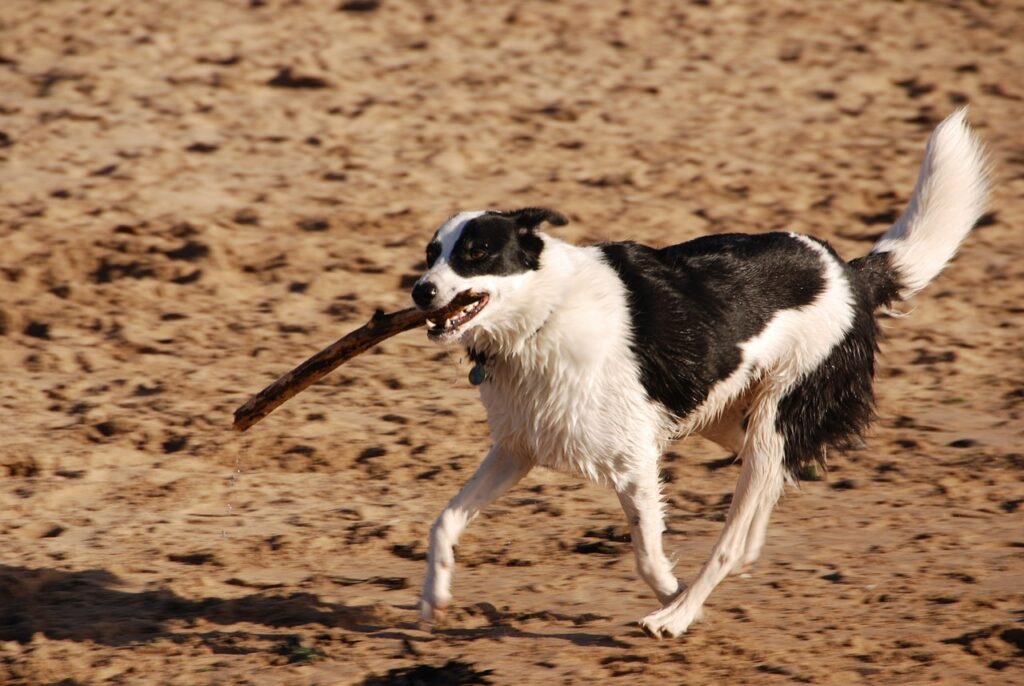Walking your dog isn’t just a routine part of pet ownership; it’s an opportunity for bonding, exercise, and exploration. But to ensure these strolls remain a fun experience for both you and your best pal, you’ve got to have the right gear—starting with the perfect leash. From the lightweight and vibrant nylon leashes to the sophisticated durability of leather, there’s a staggering variety of options out there, each designed to match your dog’s needs, your lifestyle, and even local regulations.
Whether you are navigating the busy city sidewalks or setting off on a scenic trail, the importance of selecting a leash that provides adequate safety and control cannot be understated. Differences in lengths, materials, and designs mean that your choice can influence not just comfort, but behavioral training and compliance with strict leash laws. And with concerns like late-night visibility, leash chewing, or pulling behavior to consider, having knowledge of the leash landscape is essential for any responsible dog owner.
Understanding Different Leash Types and Their Purposes
Choosing the right leash for your dog is crucial for a pleasant and safe walking experience. It’s not just about keeping your pooch close; it’s about finding a balance between safety, functionality, and comfort for both of you. Leashes are not a one-size-fits-all accessory – they differ widely based on the activity you’ll be doing, the size and behavior of your dog, and your personal preference in terms of material and design.
A common misconception is that a leash is just a leash. However, there’s an array of options designed for distinct purposes. Whether you’re looking to train a new puppy with the Martingale leash, maintain control over your strong chewer with a chain leash, or give your dog more freedom to explore on a hike with a long lead, there’s something for every situation. Let’s dig into the specifics and help you find that perfect match for your furry friend.
The Standard Dog Leash for Everyday Walks
The standard dog leash is one of the most reliable choices for everyday walks and basic training. Typically made from nylon or leather, these leashes combine durability with ease of use. The length often spans between 4 and 6 feet, which provides ample space for freedom but still keeps your four-legged companion safely by your side. Standard leashes are also the most common recommendation for fulfilling state dog leash laws.

Specialty Leashes: Retractable, Adjustable, and Multiple Dog Options
Retractable dog leashes are a bit of a double-edged sword. They offer more freedom for well-behaved dogs but require careful handling to avoid reinforcement of pulling behavior and reduce risks of injuries like rope burns. Adjustable dog leashes offer the flexibility of changing lengths based on the scenario, giving you more control when needed. And for those with more than one four-legged buddy, multiple dog leashes can facilitate walking multiple dogs simultaneously without a tangle of separate leashes.
Safety and Control: Chain, Martingale, and Seat Belt Safety Leashes
If you’ve got a dog that loves to chew through everything, a chain leash can be a tough solution that discourages this destructive habit. Meanwhile, a Martingale leash is a training aid designed to help teach your dog not to pull without choking them. And for those car rides, a seat belt safety leash ensures they’re securely buckled in, just as humans are.
Activity-Based Leashes: Hands-Free and Long Leads for Active Lifestyles
Active dog owners who enjoy jogging or hiking with their companion might consider a hands-free leash, giving you more flexibility and maintaining stability. Meanwhile, long leads are beneficial for situations where you can afford to give your dog a longer range to explore, such as in areas like open fields or during certain training exercises.
| Leash Type | Best For | Considerations |
|---|---|---|
| Standard Leash | Everyday walks, basic training | Length typically 4-6 feet |
| Retractable Leash | Well-behaved dogs in open areas | Potential for reinforcement of pulling |
| Adjustable Leash | Versatile use, multiple situations | Variable lengths for control and freedom |
| Chain Leash | Dogs that chew leashes | Durable, discourages chewing |
| Martingale Leash | Training against pulling | Combines leash and collar for training |
| Seat Belt Safety Leash | Car rides | Secures dog while driving |
| Hands-Free Leash | Running, hiking | Promotes movement and stability |
| Long Lead | Training, open field activities | Allows for extended exploration |
Selecting the Right Material for Durability and Comfort
So, you’re on the lookout for the perfect leash for your four-legged friend? Let’s zero in on the materials because, let’s face it, they can make or break the walking experience. Different materials cater to not just durability and comfort, but also the aesthetics and functionality of the leash.
When picking out a leash, consider how it feels in your hands, how well it stands up to wear and tear, and whether it’s fit for the different situations you and your furry buddy may encounter. After all, we want our pups to strut comfortably and safely.
Nylon Leashes: Lightweight and Colorful
Nylon is a real crowd-pleaser in the leash world. It’s durable, stands up well to the elements, and let’s not forget about the rainbow of colors and patterns it comes in. For those evening strolls, reflective details can turn a regular nylon leash into a safety beacon, lighting up a path in the dusk.
But here’s the downside: if your dog is a leash-muncher, nylon might not be your best bet—it’s not exactly chew-proof. Plus, if they’re pullers, nylon burn can be a real ‘ouch’ for your hands. But for most well-behaved pups, it’s a solid, practical choice that won’t break the bank.
Leather Leashes: Sophisticated and Durable
If you’re going for a classic look with a side of durability, leather is the way to go. A well-maintained leather leash can last years, and it even gets softer and more supple with age. It exudes sophistication and quality, plus it’s pretty comfy in your hand.
Quick heads up though—leather needs some love. Regular cleaning and conditioning will keep it from drying out or cracking, which is especially important if it gets wet. And while they may cost a bit more, many dog owners find the investment to be quite worth it for the longevity and the style points.
Vegan Alternatives and Rope Options
For those who prefer a cruelty-free option or those invested in eco-friendly dog care, vegan “leather” leashes are rising in popularity. These alternatives bring the leather look and feel without the animal products, and the best part is, they’re water-resistant, durable, and come in neat colors.
As for rope leashes, especially ones made from climbing rope, you’re looking at a strong, durable option that’s also gentle on your hands. Some even come with reflective threads woven in, making them an excellent choice for safety and visibility during those night walks.
Reflective Materials for Night Safety
Speaking of night safety, reflective materials can be a real life-saver. Whether it’s incorporated into nylon, rope, or even some vegan leashes, having that shiny strip can make all the difference when you’re walking near traffic after dark. It’s all about keeping both you and your pup visible to others.
You’ve got options like leashes with reflective stitching or ones with wider reflective surfaces. And it’s not just for the leash—consider pairing it with a collar or harness that has similar reflective qualities for maximum visibility.
| Material | Durability | Comfort | Chew-proof | Extra Features Available |
|---|---|---|---|---|
| Nylon | High | Medium, can cause burns | No | Reflective, various colors/patterns |
| Leather | Very High | High, softens over time | Medium | Sophisticated look, requires care |
| Vegan “Leather” | High | High | Yes | Water-resistant, various colors |
| Rope | Very High | High | Yes | Possibly reflective, comfortable grip |
| Reflective | Varies | Varies | Varies | Enhanced safety at night |
Factors to Consider When Choosing a Leash
When you’re on the hunt for that perfect leash, the sheer amount of options can feel pretty overwhelming. Whether you’re prepping for calm evening walks or gearing up for the great outdoors, there are a handful of factors that stand between you and leash nirvana. It’s all about striking that perfect equilibrium between the furry friend’s needs, legal muster, and your own personal flair.
First off, think about the size and strength of your pooch. Tiny terrier or colossal canine, there’s a leash thickness to match. Then, mull over those leash lengths. You’ll need enough slack for a sniff-and-explore but not so much that your buddy can zip across the park on a whim. Don’t forget the snazzy features like clips and handles; they really make a difference during your day-to-day doggy duties. And, of course, it’s not just about what you want—local leash laws and ordinances have their two cents to throw in as well, so keep those in mind.
Matching Leash Thickness to Dog Size
Remember Goldilocks? That’s you when picking out the leash thickness. You want one that’s just right for your dog’s size. For the spritely small breeds, a leash around 1/2″ or thinner is ideal—it won’t weigh your pup down. The medium and bigger dogs can handle and need the oomph from something up to 1″ thick. But keep in mind, the right thickness is also about comfort in your hand and the type of material you’ve chosen.
| Dog Size | Recommended Leash Thickness |
|---|---|
| Small | 1/2″ or thinner |
| Medium | 1/2″ to 3/4″ |
| Large | 3/4″ to 1″ |
Length Considerations for Different Activities
The leash length keeps your dog close or lets them roam, and it’s all about the activity at hand. Is it a leisurely neighborhood stroll, or are you out in the open fields? A standard 4′ to 6′ leash is the go-to for most scenarios. But let’s say you’ve got a scent hound or an exploring pup—longer leads can be a godsend for hikes and more interactive activities. Yet, in the middle of a crowded street, a shorter leash helps maintain control and safety.
| Activity | Recommended Leash Length |
|---|---|
| Casual Walks | 4′ to 6′ |
| Training | 6′ to 10′ |
| Outdoors/Exploring | 10′ or longer |
Leash Features: Clips, Handles, and Visibility Add-ons
The devil’s in the details, right? Sometimes, those little add-ons can make all the difference. Think about a clip that easily fastens to the collar, or a handle that’s gentle on your hands during those uncalled-for tug-of-war moments. And when the sun dips down, reflective materials or visibility add-ons can be real lifesavers, ensuring you and your furry friend stay seen and safe.
Compliance with Local Leash Laws and Ordinances
Last, but so not least: the rules of the land. Locations can vary wildly with their requirements on leash lengths and types. Some spots, for instance, are strict with a 6-foot maximum. Others might have breed-specific stipulations or no-go zones for retractables. It’s essential to be clued in to your local leash laws to avoid fines, or worse, compromised safety for your four-legged companion.
After plowing through these factors, you might feel a bit drained—but don’t throw in the towel just yet! You’re one massive step closer to snagging the leash that ticks all the boxes for both you and your beloved doggo. And remember, the aim is a fun and fuss-free experience, which is exactly what you’re setting up with the right leash in hand.
Making the Final Decision: Tips and Recommendations
So, it’s time to put it all together and pick the perfect leash for your pup. Remember, the goal here is making sure you’re both safe and comfy while you walk, train, and explore the world together. Think about your routine, consider where you’ll use the leash the most, and how it fits with your pal’s personality.
Here’s a quick recap for making that final choice: Look for durable materials like nylon or leather if you’re after longevity. Keep in mind the right length that’ll allow your dog some freedom but still keep them under check. And don’t forget to pick a leash that won’t weigh your small dog down or that’s sturdy enough to handle the pull of a larger one. Let’s break it down a little more, shall we?
Behavioral Considerations and Training Needs
Understanding your dog’s behavior and training requirements is super important. For example, if your dog tends to pull, a standard nylon leash might give you more control. However, if they’re well-behaved, the flexibility of a retractable leash could be an advantage for both of you. It’s all about finding what works best for your furry friend’s personality and habits. When going on walks, pay attention to your dog’s body language.
For those furry Houdinis that love to chew, steer clear of nylon and look for a durable rope or leather leash. Training purposes? A 6-foot leather or rope leash is often recommended since it’s comfy for you to hold and provides enough slack for various training exercises.

Prioritizing Safety in Leash Selection
Safety first, right? That goes for walks in the park or nighttime strolls. If you’re wandering around during the evening, a leash with reflective material can be a lifesaver, literally. Also, those funky designs aren’t just for show; they can provide extra grip for you and a comfortable pull for your dog.
Keep a close eye on clip types too. Trigger snap clips are fab since they hold up better under pressure—no one wants a broken clip when chasing after that squirrel that popped out of nowhere!
Assessing the Handle Comfort and Clip Ease-of-Use
Your paws need to be considered too! You’ll want a handle that’s comfortable to hold, especially on those longer walks. Some handles are padded, which can be really nice if your dog likes to pull or if you’re going on adventures together. And let’s talk quick-release clips. You’ll be thankful for an easy-to-use clip when you’re juggling a coffee, a phone, and your dog.
Also, imagine you’re in the pouring rain trying to clip that leash on a wiggly, excited dog. You don’t want to be fumbling around. So, ease-of-use is definitely something you want to test out.
Balancing Aesthetics with Functionality
Okay, now for the fun part! Who says safety and functionality can’t look good? Choose a leash that reflects both your and your dog’s personality—maybe a vibrant color or pattern that stands out in the crowd. Just because it’s practical doesn’t mean it can’t be stylish.
But remember, those fun designs and colors should never compromise the leash’s primary job: to keep your pupper safe and within your control. In the end, as long as it meets your practical needs, why not have a little fun with the design?
| Consideration | Details |
|---|---|
| Material | Nylon, leather, rope – for durability and comfort. |
| Length | Standard (4-6 feet), Long (>10 feet), Retractable – based on activity and control. |
| Thickness | 1/2″ or less for small dogs, up to 1″ for larger breeds – to balance weight and durability. |
| Reflective | Highly recommended for visibility at night. |
| Clip Type | Trigger snap for a more secure hold under tension. |
| Aesthetics | Balance style with functionality; choose colors and patterns that suit your taste. |


